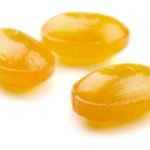Super-absorbent 100% Biodegradable Maxi Pad
There are various biodegradable feminine hygiene products available on the market, but many of them are bulky, making them uncomfortable, or they don’t have a super-absorbent layer. Lacking a super-absorbent layer makes for an incredibly unreliable and undesirable maxi pad. However, University of Utah students have developed a 100% biodegradable super-absorbent feminine maxi pad which is also thin and easy to wear.
SHERO Pad
The SHERO Pad started as a project to provide simple, easy to manufacture and 100% biodegradable feminine products to women in Guatemala. Because of the lack of sanitation, it was very important that the products were 100 percent biodegradable, which many “biodegradable” options are not, using plastic coatings or absorbency layers somewhere in the manufacturing process.
Super-Absorbent Brown Algae
The SHERO Pad uses a form of processed brown algae as a super-absorbent ingredient, which is covered with cotton and a thin paper type material which is similar to what tea bags are made of. The final product is a pad that is very effective and comfortable to wear. It can break down anywhere it lands between 45 days and six months. The cotton is organic and even the outer liner that keeps the moisture inside the pad and prevents leakage is made of a processed corn-based material. A top advantage, and a necessary component of the original project, is that this maxi pad can be manufactured easily in smaller rural villages using locally sourced materials without sophisticated tools.
Coming Soon to a Retailer Near You
While the original market was for women in developing countries such as Guatemala, the SHERO Pad will start selling in the U.S, marketed to environmentally conscious women. A startup company based in Utah hopes to begin distribution this year.
Source:
Salt Lake Tribune
 Node Smith, associate editor for NDNR, is a fifth year naturopathic medical student at NUNM, where he has been instrumental in maintaining a firm connection to the philosophy and heritage of naturopathic medicine amongst the next generation of docs. He helped found the first multi-generational experiential retreat, which brings elders, alumni, and students together for a weekend campout where naturopathic medicine and medical philosophy are experienced in nature. Three years ago he helped found the non-profit, Association for Naturopathic ReVitalization (ANR), for which he serves as the board chairman. ANR has a mission to inspire health practitioners to embody the naturopathic principles through experiential education. Node also has a firm belief that the next era of naturopathic medicine will see a resurgence of in-patient facilities which use fasting, earthing, hydrotherapy and homeopathy to bring people back from chronic diseases of modern living; he is involved in numerous conversations and projects to bring about this vision.
Node Smith, associate editor for NDNR, is a fifth year naturopathic medical student at NUNM, where he has been instrumental in maintaining a firm connection to the philosophy and heritage of naturopathic medicine amongst the next generation of docs. He helped found the first multi-generational experiential retreat, which brings elders, alumni, and students together for a weekend campout where naturopathic medicine and medical philosophy are experienced in nature. Three years ago he helped found the non-profit, Association for Naturopathic ReVitalization (ANR), for which he serves as the board chairman. ANR has a mission to inspire health practitioners to embody the naturopathic principles through experiential education. Node also has a firm belief that the next era of naturopathic medicine will see a resurgence of in-patient facilities which use fasting, earthing, hydrotherapy and homeopathy to bring people back from chronic diseases of modern living; he is involved in numerous conversations and projects to bring about this vision.









